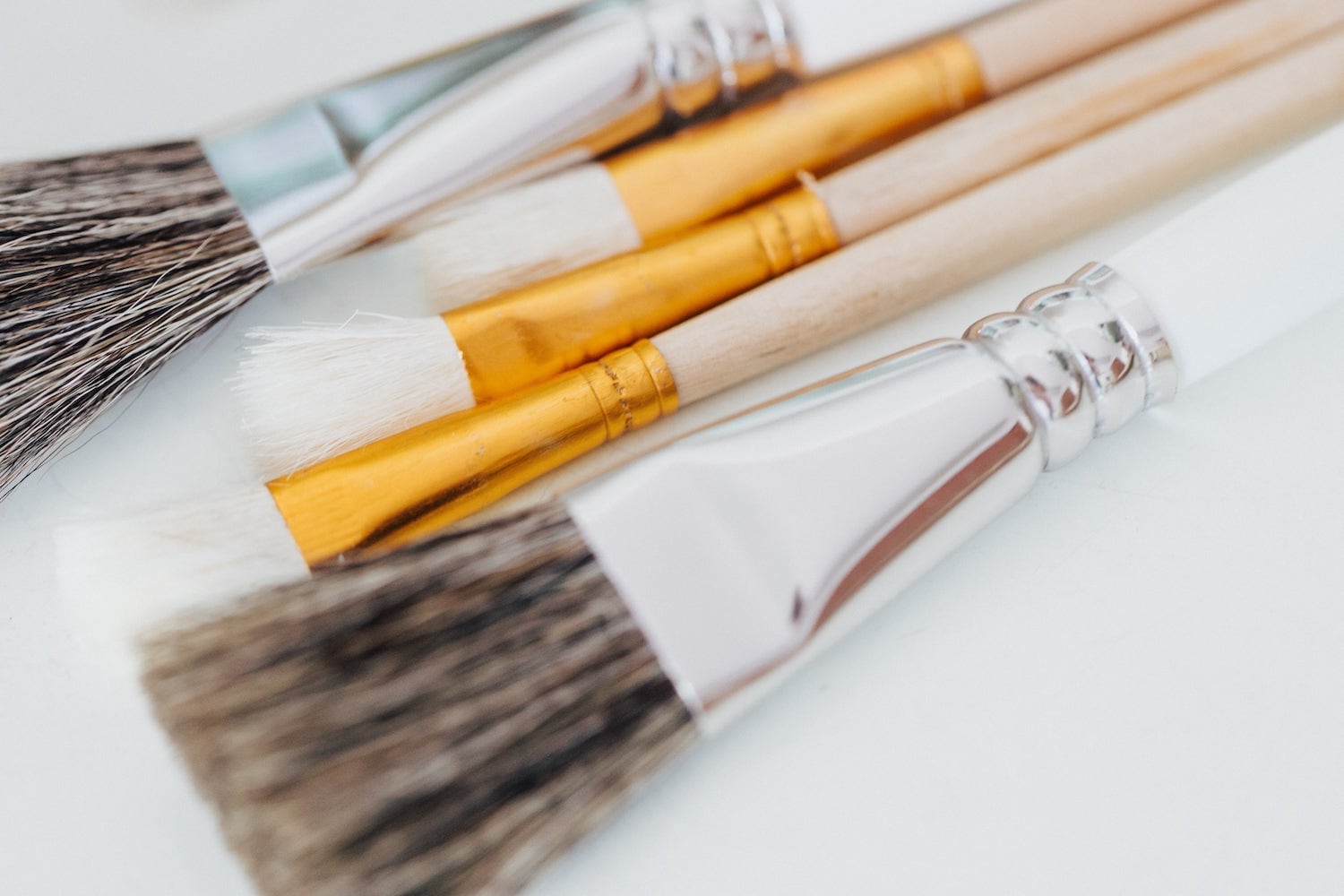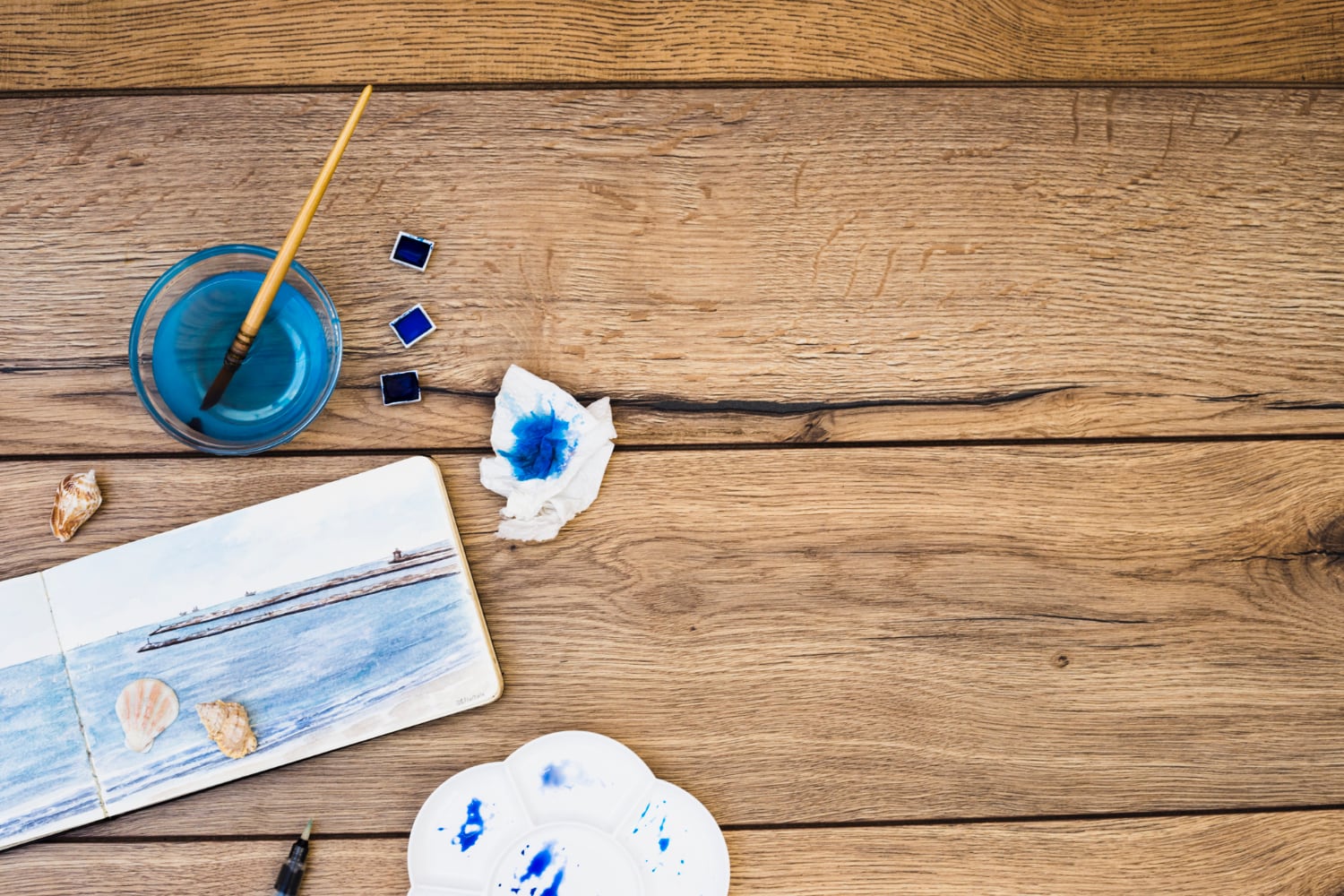Whether you're an artist or a do-it-yourself painter, you know the importance of using a good paintbrush for a project. It's often said among DIY painters and artists alike that we're only as good as the paintbrush we use.
There are a variety of different types of brush shapes and fibers that will help you deliver a variety of effects. From feathering and blending to stark marks and wide washes, there is a brush out there for you and your work. However, paintbrushes can be pricey, particularly if you need to constantly replace them.
This is why it's critical to not only get high-quality paint brushes but also know how to care for and repair them. Doing so not only saves you more time and money in the long run but also ensures that you consistently get superior results when using them.
Take Care of Your Brushes and They'll Take Care of You
If you've invested in high-quality paintbrushes and want to prolong their lifespan, then this article is for you. In this article, we discuss how to properly clean, store, protect, repair, and revive your tired old paintbrushes and have them work as good as new.
So, let's go:
1. Pick the Right Paintbrush for the Right Job
A major factor in paintbrush longevity is how it's used by the hand that flourishes it. You can buy the most luxurious red sable brushes you can afford, but they won't last a day if you don't use them for their intended purpose.

Whether you're painting a postcard, a mural, or a piece of fine art on canvas, there will always be a paintbrush to help you achieve your goal.
We actually have a series of articles on our blog, discussing exactly this subject, that you can check out here:
- Exploring the Best Brushes for Painting on Canvas
- Things You Need to Know to Find the Best Brushes for Painting on Paper
- Best Brushes for Painting Murals Complete Guide
Reading any of these articles will show you that paintbrushes come in a variety of shapes, sizes, and materials. These factors combine to create the right brush for the right job.
Using the wrong brush for a job not only produces subpar results but also damages the brush, sometimes to the point where you need to replace it immediately. This cycle of buying, abusing, and replacing brushes can get very expensive quite quickly, especially if you have several projects lined up.
So:
Save your paintbrushes from undue damage, produce better results, and save more money by using the right brush for the right job.
2. Use Just Enough Water
It’s often easy to have a small jar or container of water nearby to give your brushes a quick rinse in between colors. While not a thorough cleaning, it’s a quick solution to use when actively working. Here are a few tips to keep in mind so you don’t cause damage to your brushes when using this method.
Firstly, stick to room temperature or tepid water. Hot water can transfer heat to the glue holding the brushes bristles and ferrule in place. Cooler water prevents the loss of bristles during washing as well as on the surface of your paintings.

Second, keep two jars on hand for your quick washes. You’ll notice after a while how quickly your water can get filled with paint thus rendering the water more frustrating than helpful. Using two jars strategically helps cut down on your runs to your sink.
One jar you can use to get rid of the bulk of the medium and pigment from your brushes. The second you can use for the last remnants the first jar isn’t getting. This second jar can be used to water down your paints a bit as well, as long as there isn’t a build up of too much pigment. You may have to get more water based on the size of your work, but at least you’ll need a few less trips if you utilize this technique.
Now, while on the subject of cleaning jars…
3. Don't Leave Your Brushes Sitting in Water
While paintbrushes are made to be cleaned in water, overexposure to water can damage your brush's bristles as well.
So please never leave your brushes sitting in water for an extended period. Here are a few of the main issues you’ll run into if you leave them soak for too long.

Any cosmetic paint applied to the brush handle will begin peeling off. When the wood underneath the paint starts absorbing too much water eventually, the paint will begin to flake off. This can be aesthetically displeasing but getting chips of paint from your brush handle into your painting you’ve worked long and hard on can be very frustrating. If this does happen, be sure to wipe off as much of the loose paint as possible.
Letting your paint brushes sit too long in water can permanently alter the form of their bristles once they dry. This is due to having the brush's entire weight sitting solely on its bristles. Damage like this can make certain brushes (like a liner brush) obsolete.
Keeping your brushes in water long enough can make rust form on their metal ferrules. Worse still, water eventually seeps under your brush's ferrule, thereby loosening the glue that holds the bristles in place.
To avoid this problem, make sure to monitor how much time your brushes sit in water. You can also place them on a dry paper towel after swirl-cleaning them in your jar. Also, never forget to get your brushes out of your cleaning jar once you finish your work.
4. Clean Your Paintbrushes After Every Use
Whether you're painting a portrait indoors or working on a mural at the park, you'll want to wash your paint brushes every time you finish work for the day.

Acrylic paint dries relatively quickly, especially if you're painting somewhere warm and dry. This can cause paint to build up on your brush's bristles which can mar the fine crisp lines or smooth finish you usually get while they're clean. The paint stuck to the bristles near your brush's ferrule can also make your brush feel stiffer and even splay the bristles outward, thereby ruining the brush entirely.
You can avoid these issues by thoroughly cleaning your paint brushes. Just rinse your brushes in tepid water mixed with some mild dish soap, gently scouring the bristles for any leftover paint. Remember to squeeze out the excess paint, soap, and water gently. Using a paper towel or old washcloth for this purpose helps with this.
For longevity use a brush cleaner and conditioner specifically for this purpose. There are various brands of brush cleaner and preservers which come in a convenient containers for on the go use as well as larger sizes. Using this before your paints adhere to the brush is essential and after drying out the bristles as much as possible (although not 100% dry) you can use some of these products to help reshape and condition your brushes for their next use.
Using a silicone scouring pad (if you can’t find one in a paint department check any makeup store for something similar) can help open the brushes gently and loosen any paint deep in the bristles. This is especially helpful if you have lots of brushes and using your fingers begins to become painful or dries your hands out too much.
Check out what others are buying after reading this article
5. Dry and Store Your Brushes Properly
Now that you know how to effectively clean your paintbrushes, it's time to dry them correctly. Making sure your brushes are effectively dry ensures they don't warp and bend.
After cleaning, lay out your brushes on a piece of cloth or paper towel. Make sure to lay them flat, again, to avoid warping. If you have a brush preserver, this will be the best time to use it on your brushes.

Gently reshape the brush's bristles before they're fully dry. You can easily do this by using your index finger and thumb.
When storing brushes, place them in a container with bristles pointing up to avoid warping their bristles. If you wish, you can invest in a proper roll-up brush case to better protect your brushes.
6. Repair Minor Damages
At this point, you've already learned how to properly care for and maintain your paint brushes. But, what about the unlucky ones that have already been damaged?

If your paint brushes have minor damages, like bent or frayed bristles or hardened paint, there's still hope for them to become reusable, albeit never as good as before.
Dried paint can be removed by dipping the bristles in some rubbing alcohol or acetone for 5 minutes or until the dried paint slowly flakes off upon rubbing. Remember to do this in the open air or in a room with good airflow to avoid fumes.
Brushes with bent or frayed bristles can be fixed by dipping them in brush reshapers. There are a few available on the market for purchase but you can also make your own. ‘Brush shaper’ liquids as well as gum arabic are commonly used to get stray bristles back in line.
If you’re using a synthetic brush, you can also take some boiling water and put the ends (nowhere near the glue or epoxy holding the bristles in place) of your brushes in the hot water.
After no longer than ten or so seconds you can take the bristles out and reshape them. This is risky as you are essentially melting the plastic inside the synthetic bristles and they will be hot when you go to reshape them so please use caution when using this method. Also please never do this method with natural bristles as it will destroy it much like it would destroy your own hair if you decided to boil it.
Always remember that an ounce of prevention is worth a pound of cure, so taking care of your brushes before they can get to this point is always preferred.
7. Repurpose Damaged Brushes
Do you have tired old paintbrushes that have reached the end of their life? Don't throw them away.
Instead, repurpose them into high-quality dry brushing brushes. We once had a badly damaged mop brush back in the day that we repurposed into a filbert brush by cutting down its bristles. Now we use it all the time when dry brushing our RPG terrain pieces.
If you have no need for dry brushing, you can also always donate what you’re not using by checking with your local library or art programs to see if they’d be willing to use them.






































































